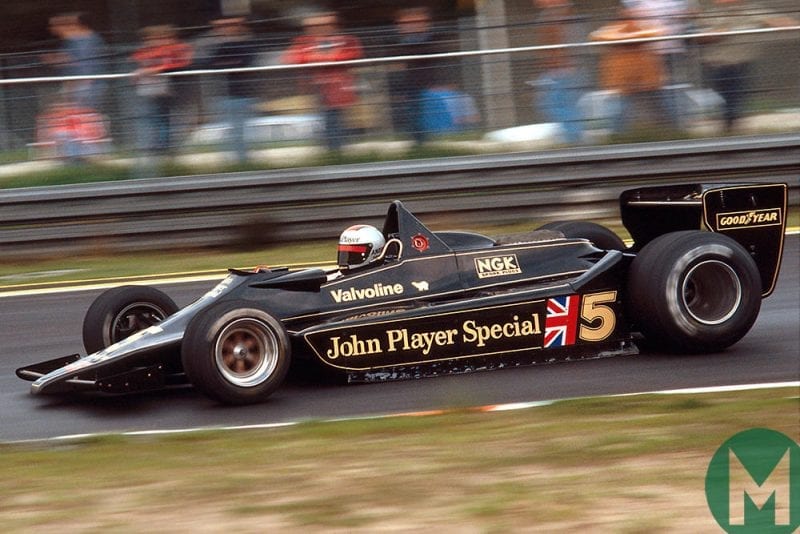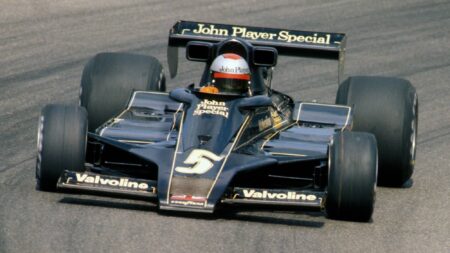“But it was Zolder that gave us the confidence to push even further ahead. Colin Chapman wasn’t one to rest. Once we’d got 79 built and running and got the odd bit of data from it, he wanted the next big thing for 1979 – Type 80 – which was misguided.
“But interesting.”
Nigel Bennett, who was at Zolder race-engineering Andretti’s team-mate Ronnie Peterson to second place in a 78, would rather have re-engineered 79: “It was an excellent car aerodynamically but poor in terms of: rear brakes, which overheated because the calipers were part of the gearbox; cooling; and chassis stiffness, which deteriorated throughout the year.”
Indeed, according to Wright, many internal steel brackets were discovered to have cracked when the chassis were dismantled at the end of the season: “That’s when we thought, ‘Hang on a minute, this is a different environment.’
“We hadn’t understood the forces involved. It was a very steep learning curve. Because 79’s structure was a bit flaky – it was the last of the old way of constructing a GP car – and as its ground effect worked better and better, hence the need to fit stiffer springs, you were loading it more and more.”
The run-up to Zolder had had its problems, too, according to Bennett: “I am pretty sure we never did a full day of testing. They used to be halted by a gearbox failing.”
Chapman was determined to continue experimenting with Getrag’s method of sequential shifting based on the principle used in bubble cars.








